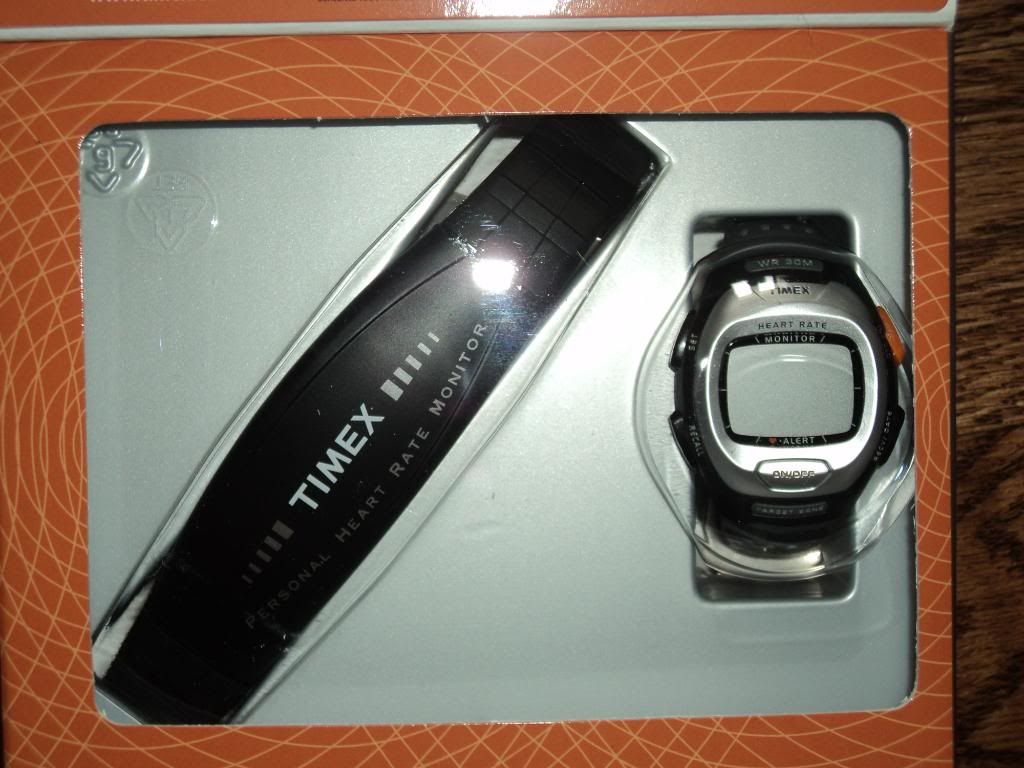Feature Article
Perception Is Everything
 Last time
Last time, we discussed (or I blathered on and you read) target heart rate zones and their use in training. A big drawback, I brilliantly pointed out, is the
dependence on knowing your maximum heart rate (MHR) and the woeful inaccuracy of the most commonly used formula to derive it:
220 - age.
Another drawback
is the reliance on some kind of device to measure your heart rate during the workout, when trying to check your own pulse rate over a period of time is difficult
or impossible. (Try it while rowing.) One device found on some treadmills and other similar machines has you place your hands on metal strips. If you've ever tried
these, you know they're unreliable, to say the least. Another device involves clipping a sensor onto your fingertip. I haven't seen these lately, except on a medical
device in a facility where my mom was recently staying. After the medical professionals tried placing it on two different fingers but failed to get any reading at
all, my mom asked, "Does that mean I'm dead?" She's still got it.

The most common and most reliable device for measuring your heart rate while training is the chest strap which sends signals to a receiver that can be on a
machine (such as a treadmill) or a portable device you can wear on your wrist, arm, or belt. (Does anyone wear a belt while training?) It can be a pain to get the
strap adjusted correctly, and there are still potential technical problems. (For example, if you fall into a pool of lava while running, your heart rate monitor
will probably stop working. Or the battery could go dead.)
In any case, as noted last time, there is another way, and it is known as ...
Sound Machine drum roll please ...
Rate of Perceived Exertion (RPE).
This arose as a result of studies by Gunnar Borg back in the 1980s that found a
correlation between how hard people
think they are working and how hard their body says they're
really working. Based on these studies, the
Borg Scale for RPE was born, and it looks like this:
- No exertion at all
- Extremely light
-
- Very light (easy walking)
-
- Light
-
- Somewhat hard
-
- Hard (heavy)
-
- Very hard
-
- Extremely hard
- Maximal exertion
The obvious question is, "Why does the scale start at 6?" The answer is that Borg wanted it to roughly correspond to heart rates for those exertion levels,
but as we know, those kinds of estimates are too unreliable to be useful. Acknowledging this, Borg also has a 0-10 point scale:
- Nothing at all
- Very weak
- Weak (light)
- Moderate
- Somewhat strong
- Strong (heavy)
-
- Very strong
-
-
- Very, very strong (almost max)
There are other non-Borg variations with different scale sizes, but the idea is the same.
Another way to measure exertion is with a "Talk Test". This measures exertion based on your ability to speak and looks something like this:
- Can speak complete sentences - easy
- Can speak partial sentences - moderate
- Can speak single syllables - hard
- Cannot speak - maximum
Note that this is not just
perceived exertion any more; there is a physical test. It's particularly helpful for a trainer to get feedback on
exertion levels that are not entirely subjective.

A nice feature of RPE is that it self-adjusts for fitness level. A "moderate" level might mean walking to one person, jogging to another, and running to a third. And as your
own fitness level increases, the physical activity required to achieve a perceived level of exertion will increase as well. It will even adjust for daily variations:
we all have some days that feel better than others, perhaps influenced by sleep, diet, stress, or other factors. RPE will take this into account so you can train
harder or easier to achieve the same perceived exertion. This can promote safe training on the bad days and accelerated progress on the good days.
So how do we use RPE to make our training more effective? Uh oh, we're out of
spacetime! Join me for the next installment for some possible answers.
Be seeing you.
-gary